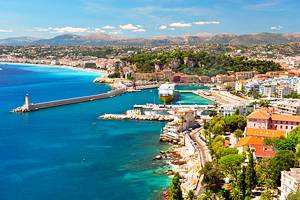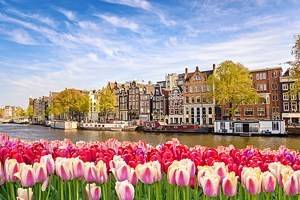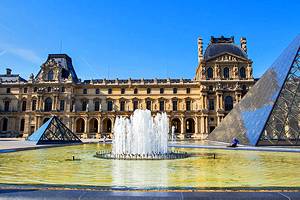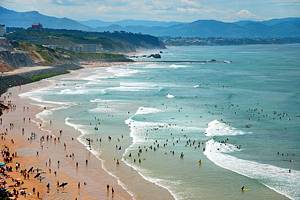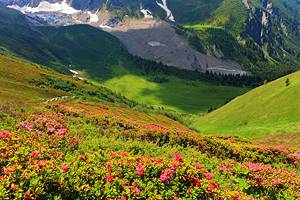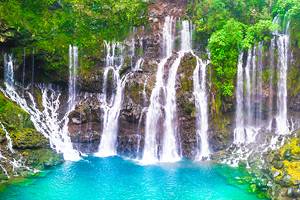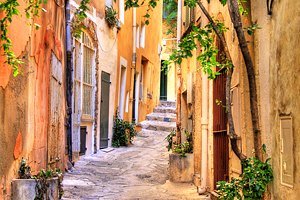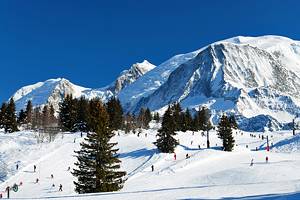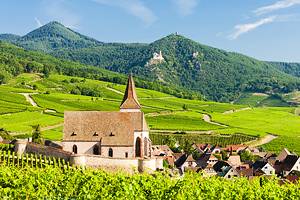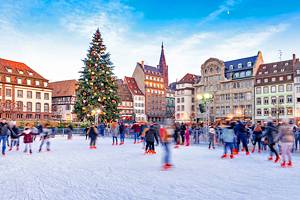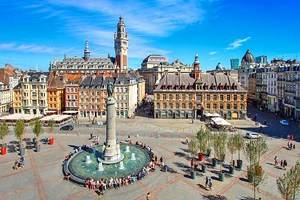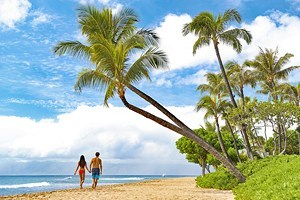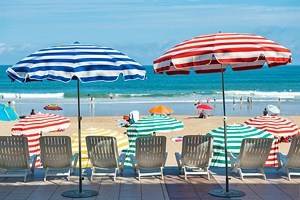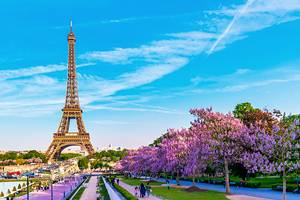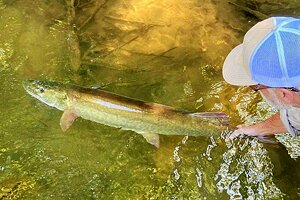15 Top Tourist Attractions in France
Author Lisa Alexander spent two years living in Paris after college, and enjoys returning to France as often as possible.
Take a dream vacation in a country that's full of dreamy destinations. Fairy-tale castles, storybook country villages, fashionable seaside resorts, snowcapped mountains, and of course Paris, the elegant City of Light.
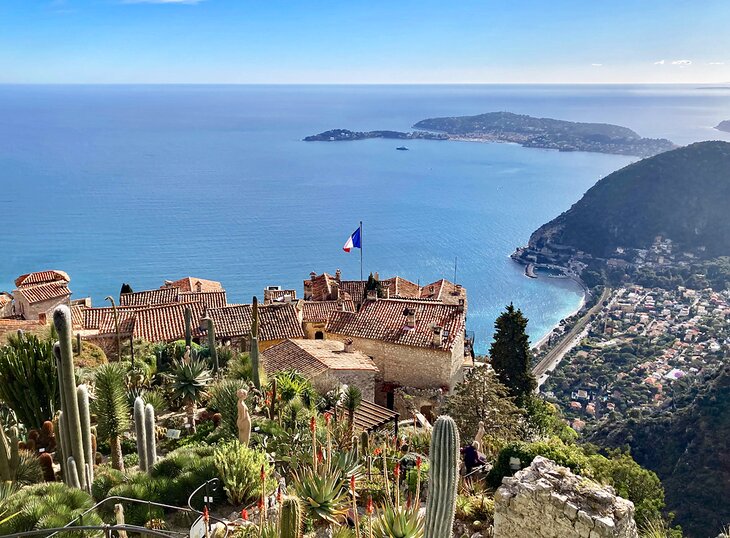
Begin with the Eiffel Tower, the modern emblem of France. Then discover famous masterpieces of art at the Louvre Museum. Spend a day pretending to be royalty at the elegant Palace of Versailles. Save time for leisurely gourmet meals. Traditional French gastronomy has been inscribed on the UNESCO list of Intangible Cultural Heritage.
Each region of France boasts its own distinctive cuisine and culture. The coastal region of Brittany offers the old-world charm of quaint fishing villages and ancient seaports, while the French Alps boasts a hearty cuisine of cheese fondue and charcuterie served in cozy chalets near ski slopes.
Every corner of the country has a certain magic. Discover the wonders of travelers' favorite places and learn about the best things to do with my list of the top attractions in France.
Eiffel Tower
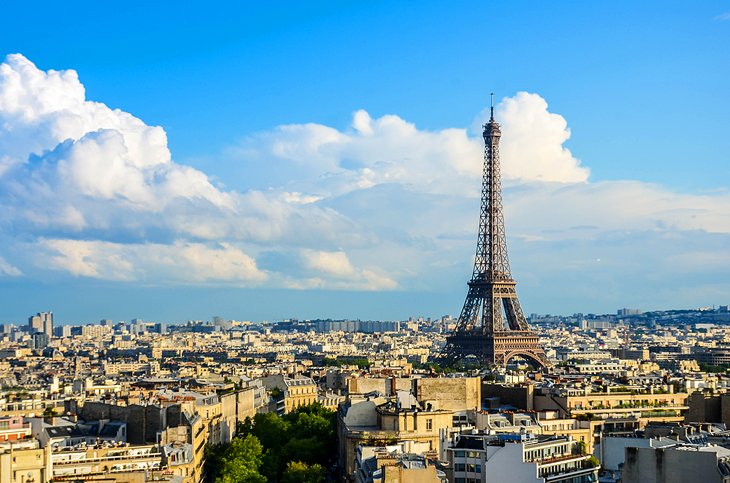
The Eiffel Tower is a feat of ingenuity as much as it is a famous landmark. This structure of 8,000 metallic parts was designed by Gustave Eiffel as a temporary exhibit for the World Fair of 1889. Originally loathed by critics, the 330-meter-high tower is now a beloved and irreplaceable fixture of the Paris skyline.
Upon the first glimpse, you'll be impressed by the tower's delicate airiness despite its monumental size. Next, the panoramas at each of the three levels will take your breath away.
You can dine with a view on the 1st floor or indulge at the Michelin-starred Le Jules Verne restaurant on the 2nd floor. At the exhilarating height of 276 meters, the top floor offers a sweeping outlook over the city of Paris and beyond. Vistas extend as far as 70 kilometers on a clear day.
Musée du Louvre
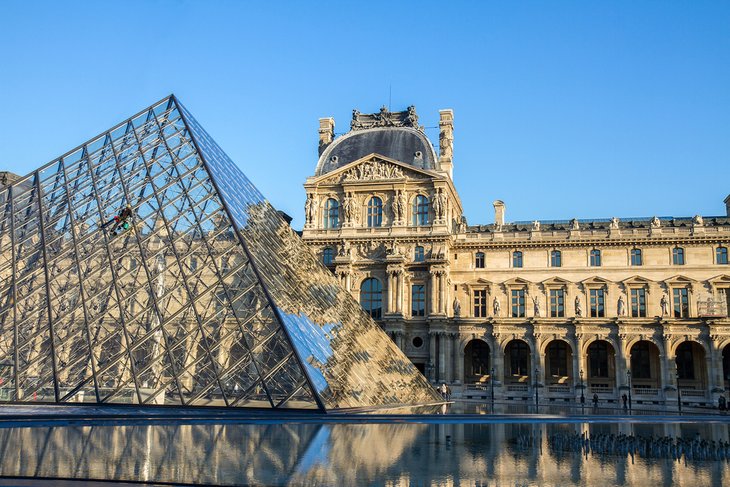
The most prestigious museum in Paris, the Louvre ranks among the top European collections of fine arts. Many of Western Civilization's most famous works are found here, including the Mona Lisa by Leonardo da Vinci, the Wedding Feast at Cana by Veronese, and the 1st-century-BC Venus de Milo sculpture.
The collection owes its wealth to the contributions of various kings who lived in the Louvre, in centuries past when it was a royal palace. Other pieces were added as a result of France's treaties with the Vatican and the Republic of Venice, and from the spoils of Napoléon I.
The Louvre displays around 35,000 artworks, including countless masterpieces. It's impossible to see it all in a day or even in a week. Take a private guided tour or focus on a shortlist of key artworks for the most rewarding experience.
Château de Versailles

The UNESCO-listed Château de Versailles immerses you in France's glorious regal history. Step back in time to the era of the ancien régime, when Louis XIV (the "Sun King"), Louis XV, and Louis XVI ruled France. During that period, the Palace of Versailles set the standard for princely courts in Europe.
The most spectacular space in the palace is the Hall of Mirrors, where courtiers waited for an audience with His Majesty. This dazzling gallery sparkles with sunlight that enters through the windows and is reflected off hundreds of ornamental mirrors, while dozens of glittering chandeliers and gilded details make the overall impression even more marvelous.
Versailles is equally renowned for Les Jardins, formal French gardens featuring decorative pools, perfectly trimmed shrubbery, numerous statues, and magnificent fountains. The gardens were created in the 17th century by renowned landscape designer André Le Nôtre and are surrounded by 800 hectares of lush parkland.
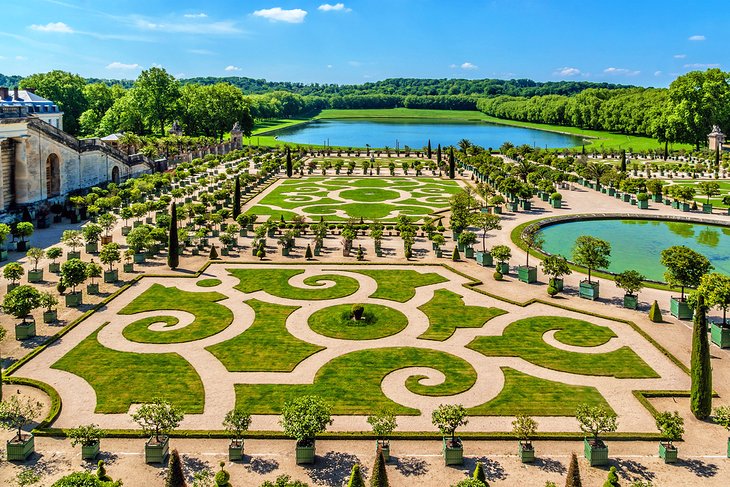
Beyond the formal gardens is the Domaine de Trianon, which includes Le Grand Trianon palace; Le Petit Trianon château; and Le Hameau de la Reine (The Queen's Hamlet), Marie-Antoinette's fabricated pastoral village featuring quaint cottages set around a lake.
The buildings of Marie-Antoinette's hamlet were inspired by the rural architecture of the Normandy region. (Faux pastoral hamlets were a typical feature of aristocratic estates during the 18th century.) The "farmhouse" and "cottage" buildings have a weathered finish that was intentionally rendered to lend a rustic look (although the interiors were exquisitely furnished).
Marie-Antoinette's hamlet originally had a working dairy and farm, which served educational purposes for her children. This idyllic spot was designed as a place for Marie-Antoinette to escape from the formality of court life, take walks, and visit with friends. Le Hameau de la Reine provides a rare glimpse of Marie-Antoinette's private world.
Côte d'Azur
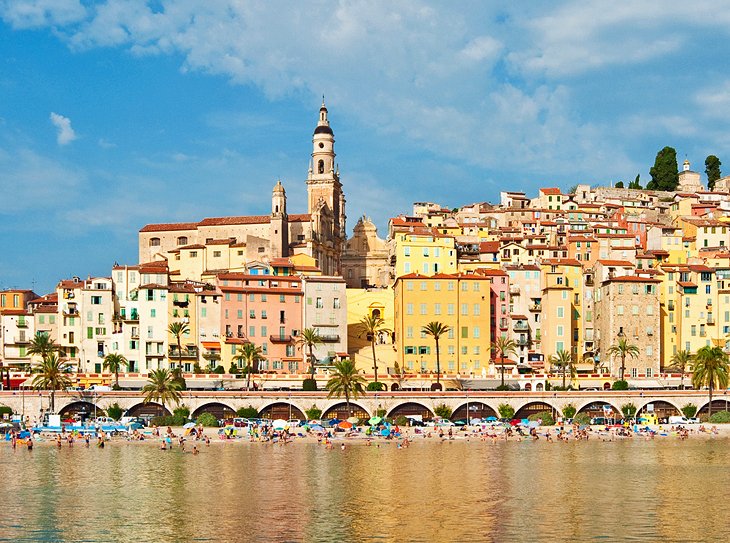
The most fashionable stretch of coastline in France, the Côte d'Azur extends from Saint-Tropez to Menton near the border with Italy. Côte d'Azur translates to "Coast of Blue," a fitting name to describe the Mediterranean's mesmerizing cerulean waters.
To English speakers, this glamorous seaside destination is known as the French Riviera, words that have a ring of sun-drenched decadence.
During summer, the seaside resorts cater to beach lovers and sun-worshippers. The rich and famous are also found here in their lavish villas and luxury yachts.
The town of Nice has panoramic sea views and stellar art museums but nothing beats the views from the hilltop village of Eze. Cannes is famous for its celebrity film festival and legendary Belle Epoque hotels.
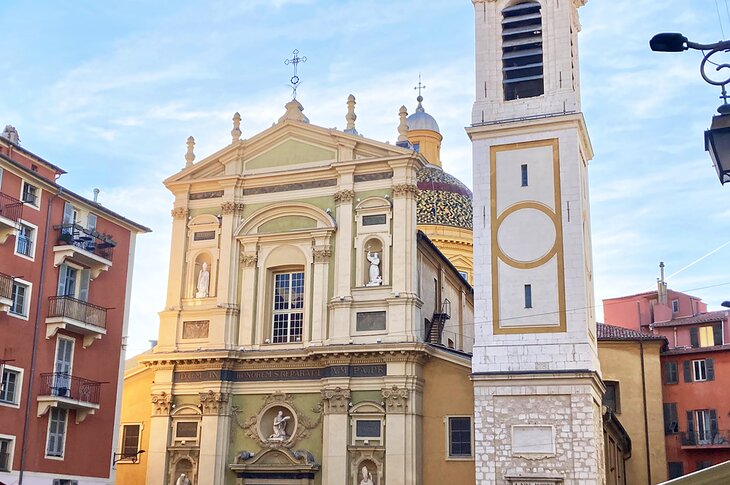
The best sandy beaches are in Antibes, which also has an atmospheric Old Town and superb museums. Saint-Tropez offers fabulous public and private beaches plus the charm of a Provençal fishing village, while Monaco seduces with its exclusive ambiance and stunning scenery.
Mont Saint-Michel
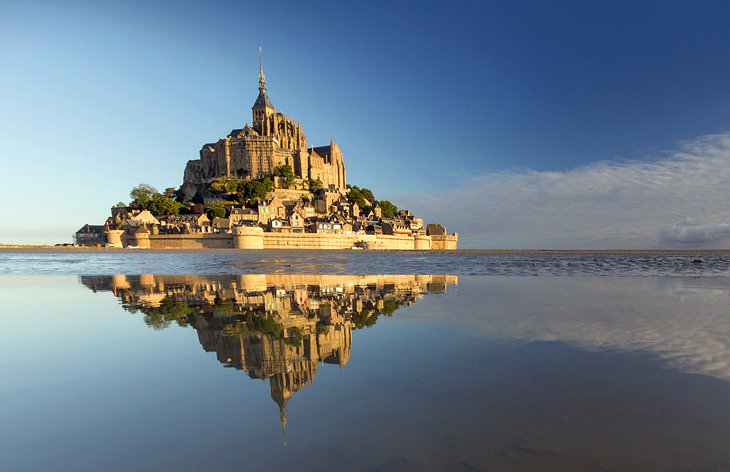
Rising dramatically from a rocky islet off the Normandy coast, the UNESCO-listed Mont Saint-Michel is one of France's most striking landmarks. This "Pyramid of the Seas" is a mystical sight, perched 80 meters above the bay and surrounded by imposing defensive walls and bastions.
The main tourist attraction, the Abbaye du Mont Saint-Michel is a marvel of medieval architecture with soaring Gothic spires. You will be awed by the serene beauty of the Abbey Church, with its harmonious Romanesque nave and ornate high-vaulted choir.
Since it was built in the 11th century, the Abbey Church has been an important Christian pilgrimage destination, known as "The Heavenly Jerusalem." Modern-day pilgrims are still inspired by Mont Saint-Michel and continue the tradition of crossing the bay by foot as it was done in the Middle Ages.
Castles of the Loire Valley
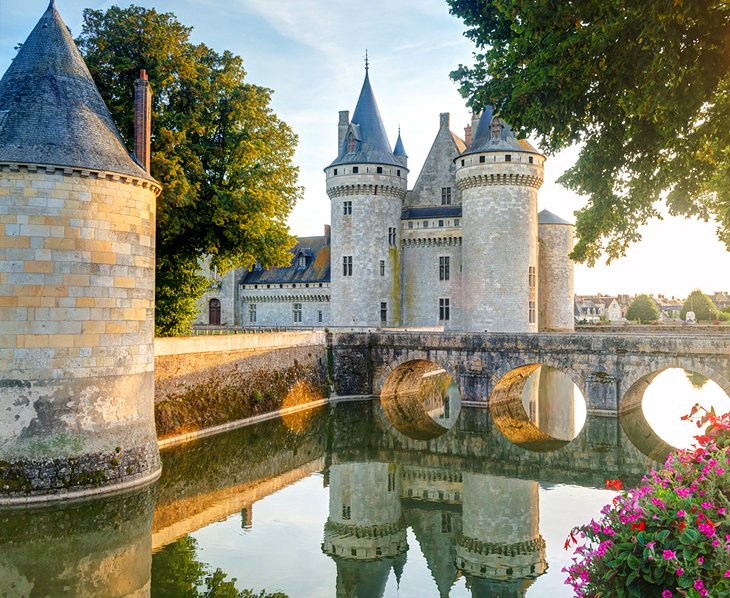
Traveling through the Loire Valley gives the impression of stepping into a children's storybook. Turreted fairy-tale castles grace a luxuriant countryside of dense woodlands and gently flowing rivers. The entire Loire Valley, an area known as the "Garden of France," is listed as a UNESCO World Heritage Site.
Some of the Loire castles are medieval fortresses built on hilltops and surrounded by ramparts. However, the most famous Loire châteaux are sumptuous Renaissance palaces that were designed purely for enjoyment and entertainment, as an extension of court life outside of Paris.
The Château de Chambord, built for King Francis I, is the most magnificent château; the Château de Chenonceau has a distinctive feminine style; and the Château de Cheverny is a Neoclassical-style manor house estate that includes a Tintin exhibition, English gardens, and a forest.
It is also worth visiting the UNESCO-listed cathedrals in Chartres and Bourges as well as the city of Orléans, where Joan of Arc helped defeat the English army in 1429, and the Château Royal d'Amboise, the residence of French kings for five hundred years.
Cathédrale Notre-Dame de Chartres
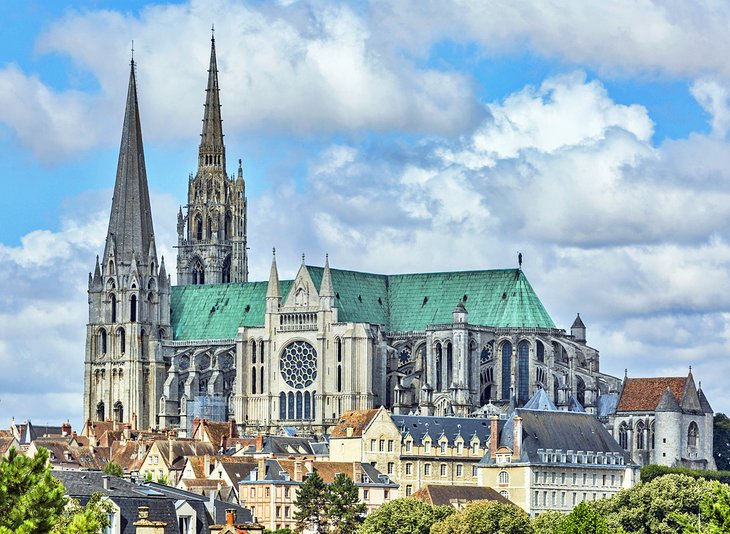
For more than eight centuries, the magnificence of Chartres Cathedral has inspired the faithful, and some say this sublime sanctuary has restored belief in the doubtful.
The UNESCO-listed Chartres Cathedral is a marvel of Gothic architecture, renowned for its 12th- and 13th-century stained-glass windows. Covering 2,500 square meters, the brilliant windows allow colorful light to filter into the vast nave, creating an ethereal effect. The intricately detailed windows reveal the incredible craftsmanship in depicting biblical stories.
The rose windows are especially noteworthy for their incredible size and details. Other highlights are the Passion window, one of the most original in its style and expression, and the Blue Virgin window which dates from the 12th century.
On the third Saturday of September, the city of Chartres presents Chartres en Lumières (Festival of Light) during European Heritage Days. The festival includes street art, music, and guided tours. During this annual event, the Chartres Cathedral dazzles crowds with its colorful multimedia show featuring illuminations and sound. The illumination show also takes place at the cathedral in July and August every evening after 10pm.
Provence
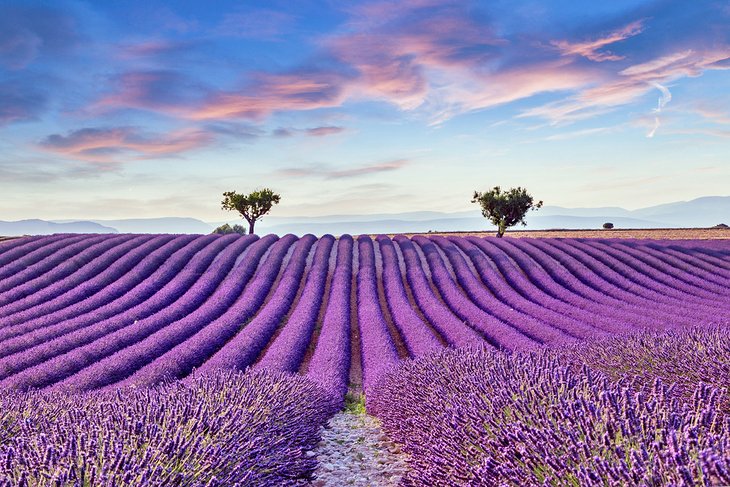
Escape into a bucolic landscape of olive groves, sun-drenched rolling hills, and deep purple lavender fields, with little villages nestled in the valleys and perched on rocky outcrops. The vibrant scenery has enchanted many famous artists, including Cézanne, Matisse, Chagall, and Picasso.
The rustic natural beauty, country charm, and laid-back atmosphere of Provence allow the region's art de vivre (art of living) to flourish. Sultry weather encourages leisurely strolls along cobblestone streets and afternoons spent on sunny terraces of outdoor cafés.
Among the many attractions of Provence is its delicious Mediterranean cuisine, which is based on olive oil, vegetables, and aromatic herbs. You can choose from a wide range of culinary establishments, from family-run bistros to Michelin-starred gastronomic restaurants.
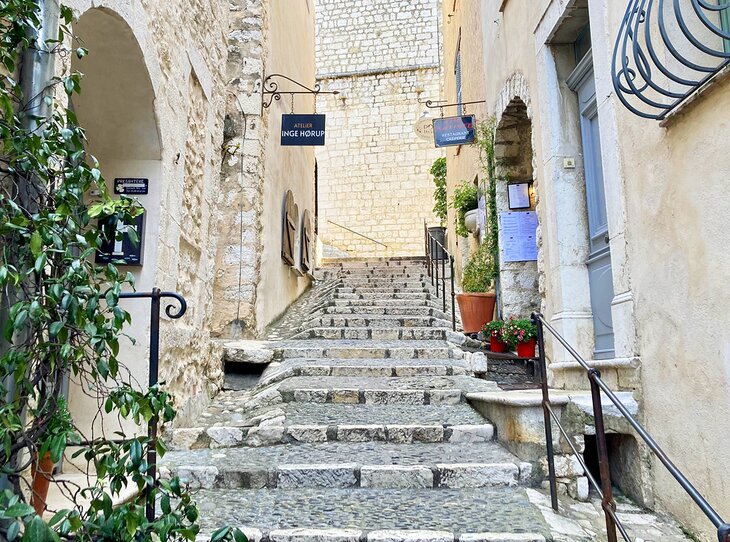
The quintessential Provençal town, Aix-en-Provence is famous for its colorful open-air markets and the hundreds of fountains that are typical of southern France. Fascinating ancient ruins and traditional festivals distinguish Arles, while the medieval city of Avignon is home to the UNESCO-listed Palais de Papes.
Even tiny villages, like Saint-Paul-de-Vence, Saint-Rémy, and Gordes, have amazing historic sites, fantastic museums, and an irresistibly quaint ambiance.
Chamonix-Mont-Blanc
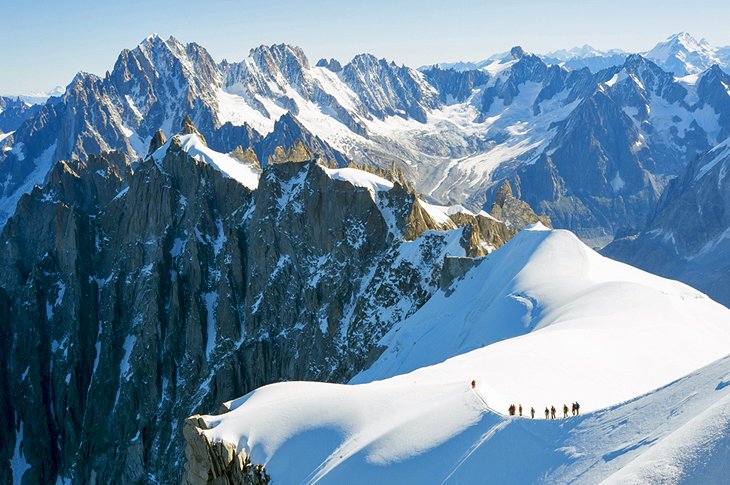
The awesome spectacle of Mont Blanc in the French Alps is an unforgettable sight. The highest mountain peak in Europe, Mont Blanc soars to 4,810 meters. Thanks to its elevation, Mont Blanc ("White Mountain") is always blanketed in snow.
Beneath its majestic peak is the traditional alpine village of Chamonix, nestled in a high-mountain valley. This delightful little town is filled with historic churches, traditional alpine restaurants, and charming auberges.
Chamonix is a great base for skiing, hiking, rock climbing, outdoor adventures, or just relaxing. The village is one of the best places to visit in France for inspiring natural scenery and alpine accommodations. Upscale mountain lodges and cozy chalets welcome guests in style.
Catering to diners with good appetites, local restaurants serve hearty meals typical of the Savoie region, as well as international cuisine. To sample the Savoyard specialties, try the charcuterie, fondue, and raclette (melted Gruyère, Comté, or Emmentaler cheese served with boiled potatoes).
Alsace Villages

Some of the prettiest villages in France are tucked away in the green, rolling hills of Alsace, where the Vosges Mountains border the Rhine River of Germany. These picturesque Alsatian villages feature pastel-painted, half-timbered houses clustered around small parish churches. Cheerful flowering balconies and pedestrian cobblestone streets add to the appeal.
Villages Fleuris and Plus Beaux Villages de France
Many of the villages have won France's Villages Fleuris award for their lovely floral decorations, such as Obernai, with its characteristic burghers' houses; the charming little village of Ribeauvillé, where many homes are adorned with potted flowers; the Pays d'Art et d'Histoire (Region of Art and History) of Guebwiller; and the captivating medieval village of Bergheim.
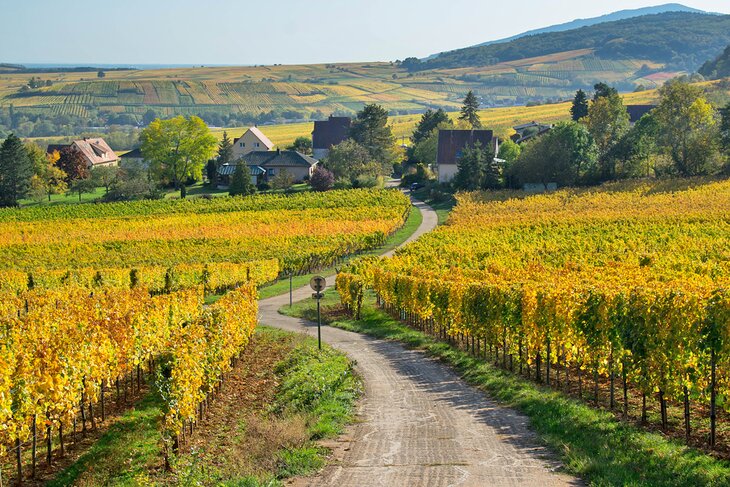
Some of the flower-bedecked Alsatian villages are so pretty that they have been designated as both Villages Fleuris and Plus Beaux Villages de France (Most Beautiful Villages of France), including the storybook hamlet of Riquewihr and the enchanting village of Eguisheim, nestled in a valley. Another of the Plus Beaux Villages is Mittelbergheim, known for its gastronomy and gorgeous pastoral landscape, at the foot of the verdant Mont Saint-Odile.
If you're planning an Alsace vacation itinerary, Colmar is a good base to explore the Alsatian villages and surrounding nature trails.
Carcassonne
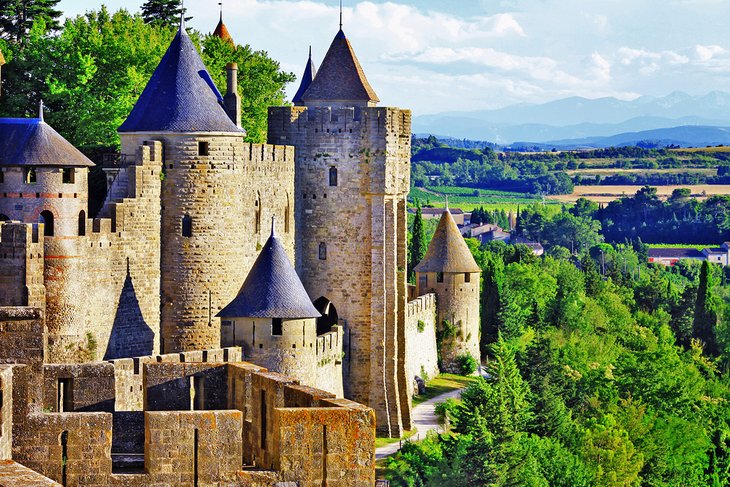
With its turreted towers and crenelated ramparts, Carcassonne seems straight out of a fairy-tale scene. This well-preserved (and renovated) fortified city offers a total immersion into the world of the Middle Ages.
Known as La Cité, the UNESCO-listed walled medieval town of Carcassonne is a warren of narrow, winding cobblestone lanes and quaint old houses. Nearly every street, square, and building has retained its historic character. Within la Cité, the 12th-century Château Comtal reveals the Cathar heritage of the Languedoc region.
Must-see tourist attractions are the double-circuited ramparts with 52 towers and the Basilique Saint-Nazaire et Saint-Celse, which features splendid 13th-century stained-glass windows.
Carcassonne draws many visitors on July 14th for its fireworks show, to celebrate Bastille Day, a national holiday (Fête Nationale). Despite being a small town, Carcassonne presents one of the most dazzling July 14th fireworks displays in France.
Brittany

The Brittany region in northeastern France brims with natural beauty and historic charm. A rugged coastline, quaint fishing villages, and weathered seaports characterize this region. The distinctive local culture is steeped in ancient traditions and famous for its costumed religious festivals.
A mystical land of myths and legends, Brittany has a Celtic influence and a dialect related to Gaelic. The local cuisine is based on seafood and is renowned for its savory buckwheat crêpes and sweet dessert crêpes.
The quintessential Breton port is Saint-Malo surrounded by 17th-century fortifications. Quimper is a picture-postcard town with handsome half-timbered houses, pleasant squares, and an impressive Gothic cathedral. Nantes has a spectacular château and is where the Edict of Nantes was signed in 1598 granting freedom of religious belief to Protestants.
Other highlights of Brittany are the pristine sandy beaches, tiny remote islands, and ancient castles. Belle-Île-en-Mer, the largest of the Breton islands, appeals to vacationers in search of a peaceful seaside setting. Ferry boats run from Quiberon, Port Navalo, and Vannes to Belle-Île-en-Mer.
Biarritz
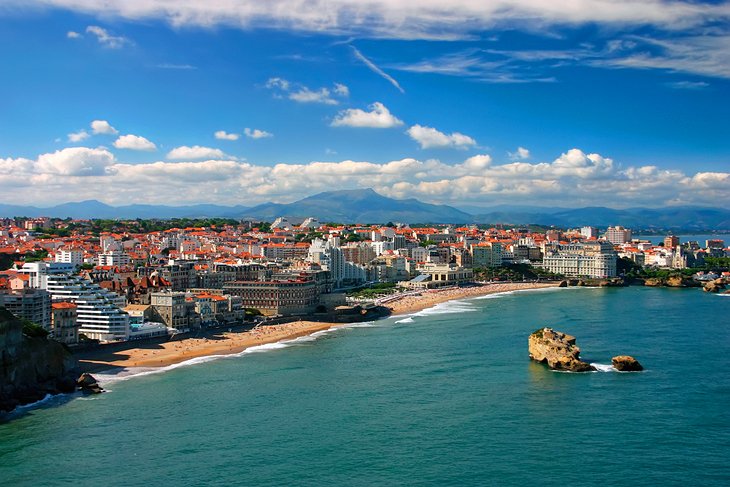
This fashionable seaside resort has an elegant and aristocratic air; it was a favorite destination of Empress Eugénie, wife of Napoleon III. Empress Eugénie loved the beautiful setting on the Bay of Biscay in France's Basque country.
The imperial couple's grandiose Second Empire palace has been converted into the Hôtel du Palais Biarritz, a luxury hotel featuring a Michelin-starred gastronomic restaurant and sensational views of the Grande Plage beach. This large sandy beach, with its broad seafront promenade, has attracted high-society vacation goers since the Belle Epoque.
Other must-see sights of Biarritz are related to the ocean: the Biarritz Aquarium; the Lighthouse; and the Rocher de la Vierge (Virgin of the Rock) which stands along the coastline on an immense rock beaten by the Atlantic's wild waves.
For a taste of the town's regal past, visit the chic Miremont tearoom that has served exceptional pastries since 1872.
Rocamadour
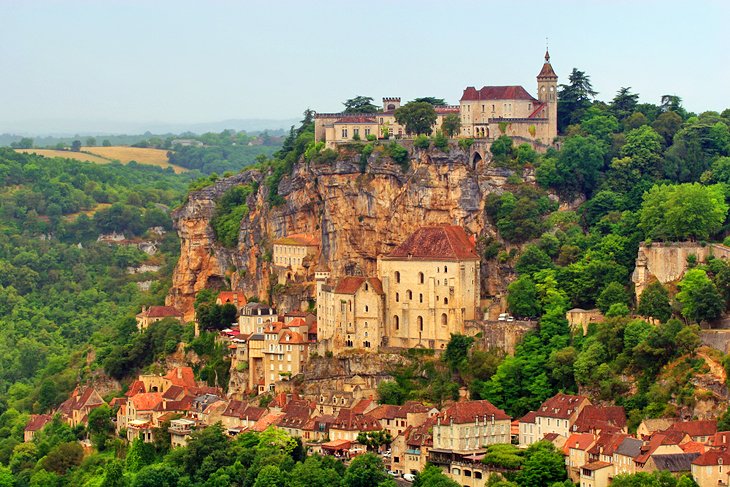
Rocamadour resides between heaven and earth, suspended on a sheer limestone cliff as if providing a medium for spiritual wonders.
In the 11th century, this pilgrimage destination was the third most important in Christendom after Jerusalem and Rome. Rocamadour was on the medieval Chemin de Saint-Jacques (Way of Saint James) pilgrimage trail to Santiago de Compostela in Spain.
The village has seven ancient sanctuaries, but pilgrims flock to the Chapelle Notre-Dame (Chapelle Miraculeuse), which possesses the venerated Black Virgin (Notre-Dame de Rocamadour). This precious Virgin Mary figure was carved from walnut wood that naturally darkened over the centuries and is associated with miracles.
Another must-see sight is the UNESCO-listed Basilique Saint-Sauveur, the largest church of Rocamadour built in Romanesque and Gothic styles between the 11th and 13th centuries. For a challenging spiritual experience, pilgrims can ascend the steep flight of steps, with 12 Stations of the Cross, leading up to the château at the highest point in the village.
About 145 kilometers from Limoges in the Limousin, Rocamadour is surrounded by the Parc Naturel Régional des Causses du Quercy, a natural park in the Dordogne region.
Prehistoric Cave Paintings in Lascaux
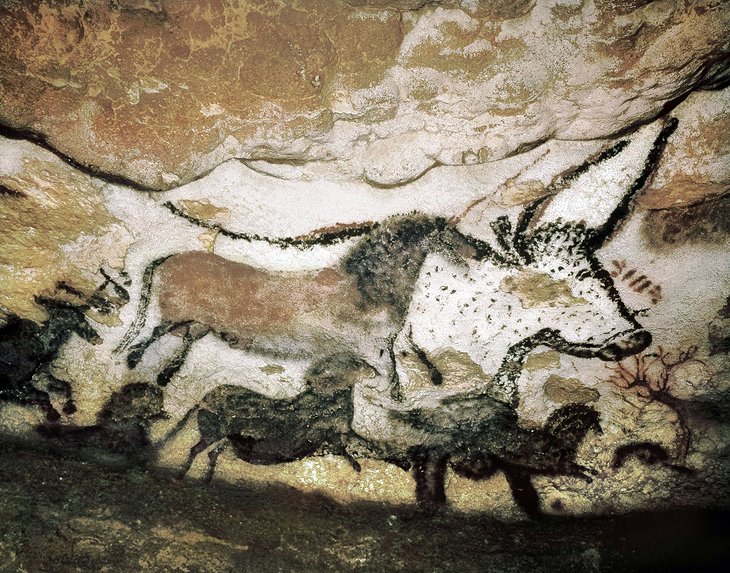
Discover the fascinating world of prehistoric art in Lascaux, the finest example of Paleolithic art in the world. This UNESCO-listed site is in the Vézère Valley of the Dordogne region. Discovered in 1940, the Lascaux Cave contains exquisite prehistoric paintings, but in 1963 was closed to the public to prevent damage.
A replica of the cave was created at the nearby Lascaux II site in Montignac, 200 meters from the actual cave. Opened in 1983, Lascaux II is a faithful reproduction of the Lascaux Cave and its paintings. The Paleolithic art has been carefully recreated, including every detail of the animal paintings in authentic ochre hues.
Opened in 2016, the sleek ultra-modern International Centre for Cave Art (also in Montignac) presents a complete replica (Lascaux IV) of the original Lascaux Cave along with museum exhibits that provide context for the prehistoric artworks. Virtual reality exhibits and a 3-D film help bring the prehistoric period to life.
Highlights of the Lascaux prehistoric cave paintings are the Salle des Taureaux (Hall of the Bulls) with panels featuring unicorns and bears and the Diverticule Axial, a narrow 30-meter-long hall with impressive drawings of bulls, cows, and horses. The art reproductions of the replica caves are so accurate that visitors would not be able to tell the difference from the original.
Best Time to Visit France
France appeals to travelers through the four seasons. For most tourists, the best seasons to visit are in the late spring, summer, and early autumn. Summertime is the most popular season because of school vacations and warm weather. Late spring and early autumn offer pleasant, mild weather and less crowds.
For those who appreciate beautiful gardens, spring and summer are the best seasons to visit France and especially Paris. One of the top day trips from Paris, Monet's Garden in Giverny is spectacular when tulips bloom in April, in May when wisterias bud, and in June when roses blossom. By July, the famous water lilies of Monet's paintings appear in the garden's pond.
In terms of warm weather and long days, summer is the best season to visit. The months of July and August are great for beach vacations on the French Riviera or the elegant resort of Biarritz on the Atlantic Coast. Outdoor sports enthusiasts enjoy the countryside of Provence, the Auvergne region, and the French Alps during summertime, when the sunshine and comfortable temperatures make hiking and boating enjoyable.
For budget travelers, the winter is a good time to visit France because hotel prices are reduced. However, from December through February the weather can be very chilly (low 40s to mid 40s Fahrenheit in Paris and northern France), as well as rainy.
Many travelers enjoy visiting during the holiday season (end of November through January 1st) since Paris and other cities feature lovely Christmas decorations. In addition, the holidays are the time for Christmas music concerts and traditional Marchés de Noël (Christmas markets) especially in the small towns of Provence, Annecy in the French Alps, and the quaint villages of the Alsace region.


